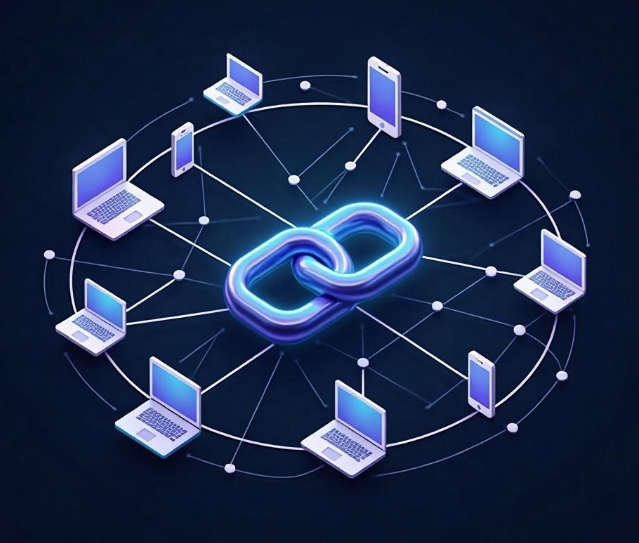Multi-platform compatibility and cross-platform support in DApp development
- latest articles
- 1.DApp Development & Customization: Merging Diverse Market Needs with User Experience 2.Analysis of the Core Technical System in DApp Project Development 3.How to achieve cross-chain interoperability in Web3 projects? 4.How does the tokenization of points reconstruct the e-commerce ecosystem? 5.How to Set and Track Data Metrics for a Points Mall? 6.What is DApp Development? Core Concepts and Technical Analysis 7.Inventory of commonly used Web3 development tools and usage tips 8.Development of a Distribution System Integrated with Social E-commerce 9.Six Key Steps for Businesses to Build a Points Mall System 10.What is DApp Development? A Comprehensive Guide from Concept to Implementation
- Popular Articles
- 1.Future Trends and Technology Predictions for APP Development in 2025 2.Analysis of the DeFi Ecosystem: How Developers Can Participate in Decentralized Finance Innovation 3.From Zero to One: How PI Mall Revolutionizes the Traditional E-commerce Model 4.DAPP Development | Best Practices for Professional Customization and Rapid Launch 5.Recommended by the Web3 developer community: the most noteworthy forums and resources 6.From Cloud Computing to Computing Power Leasing: Building a Flexible and Scalable Computing Resource Platform 7.How to Develop a Successful Douyin Mini Program: Technical Architecture and Best Practices 8.Shared Bike System APP: The Convenient Choice in the Era of Smart Travel 9.How to Create a Successful Dating App: From Needs Analysis to User Experience Design 10.From Design to Development: The Complete Process of Bringing an APP Idea to Life
With the rapid development of blockchain technology, Decentralized Applications (DApps) have become an important component in the blockchain field. DApps achieve decentralized data processing and storage through smart contracts, significantly enhancing data security and transparency. However, despite the inherent decentralization advantages of blockchain, we still face challenges related to multi-platform compatibility and cross-platform support during DApp development and usage. This article will explore the challenges and solutions associated with multi-platform compatibility and cross-platform support in DApp development.
I. Definition and Characteristics of DApps
Before delving into the multi-platform compatibility and cross-platform support of DApps, we first need to clarify what a DApp is.
A DApp (Decentralized Application) is an application that runs on a blockchain or decentralized network. Unlike traditional centralized applications (such as server-based applications), the core logic and data storage of a DApp do not rely on a single server but are distributed and stored on the blockchain. DApps typically possess the following characteristics:
Decentralization: DApps have no single point of failure; all transactions and data are processed through smart contracts and the blockchain, avoiding risks associated with centralized servers in traditional applications.
Open Source: The source code of DApps is usually public, allowing any developer to contribute and modify it.
Smart Contract-Driven: The core functionality of DApps is implemented through smart contracts, which automatically execute predefined rules, reducing human intervention.
Cryptocurrency or Token Support: Many DApps are associated with cryptocurrencies or tokens, used for paying transaction fees or incentivizing participants.
However, despite the numerous advantages of DApps, developers still face many technical and platform challenges during development, especially in terms of multi-platform compatibility and cross-platform support.
II. Multi-Platform Compatibility Challenges in DApp Development
1. Differences in Blockchain Platforms
Different blockchain platforms have varying technology stacks, consensus mechanisms, smart contract languages, etc., making it difficult to directly port a DApp developed on one platform to another. For example, Ethereum uses Solidity for smart contract development, while other platforms like Binance Smart Chain and Polkadot may support different contract languages and development frameworks. These platform differences make cross-platform compatibility a significant challenge for DApps.
2. Diversity of Client Devices
DApps not only need to ensure compatibility between blockchain platforms but also consider compatibility with different devices and operating systems. For instance, DApps may need to run on both desktop and mobile devices, which might use different operating systems (such as Windows, macOS, Android, iOS, etc.). Variations in browser and Web3 support across different operating systems can affect the normal operation of DApps. Additionally, users may access DApps through different means, such as browser extensions (like MetaMask) or standalone DApp browsers, and developers must ensure compatibility with these various access methods.
3. Network and Performance Issues
DApp operation relies on network connectivity, and performance can be affected, especially when blockchain network connections are unstable. Factors such as latency and throughput across different platforms and networks directly impact DApp performance. For example, users accessing a DApp might experience longer transaction confirmation times due to network latency, which may vary across platforms.
4. Hardware Differences in Devices
Differences in hardware configurations across devices can also cause DApps to run poorly on certain platforms. For example, low-performance devices might not support complex DApp applications or may perform poorly in graphics rendering and computation. DApp developers need to ensure that applications run smoothly on devices with various hardware configurations to maintain a consistent user experience.
III. The Necessity of Cross-Platform Support
The goal of cross-platform support is to ensure that DApps can run seamlessly on multiple platforms, providing a consistent user experience. With the proliferation of mobile internet and the variety of devices users employ, cross-platform support has become a crucial task in DApp development.
1. Expanding User Reach
By achieving cross-platform support, DApps can reach a broader user base, regardless of the operating system or device they use. For developers, this means access to wider markets and more user interactions. In the blockchain field, cross-platform support not only increases the user base of DApps but also enhances project visibility and influence.
2. Improving User Experience
Cross-platform support ensures that DApps provide a consistent experience across different platforms. Whether on desktop or mobile, users can enjoy the same functionality and interface design, reducing operational differences between platforms and enhancing user comfort and trust. This plays a vital role in increasing user retention and activity for DApps.
3. Reducing Development Costs
If DApps can achieve cross-platform support, developers only need to develop a unified codebase that can be deployed and updated across multiple platforms. This not only saves development time but also reduces maintenance costs. Additionally, cross-platform development minimizes compatibility issues arising from platform differences, lowering the complexity of debugging and testing.
IV. Solutions for Multi-Platform Compatibility and Cross-Platform Support in DApp Development
1. Using Libraries like Web3.js and Ethers.js
To ensure DApps can run on different platforms, developers often use JavaScript libraries like Web3.js and Ethers.js, which can interact with various blockchain platforms (such as Ethereum, Binance Smart Chain, etc.) and provide standardized API interfaces. These libraries significantly simplify the complexity of blockchain interactions, helping developers achieve compatibility across multiple platforms.
For example, both Web3.js and Ethers.js support interaction with in-browser wallets (like MetaMask), allowing users to access their blockchain accounts and smart contracts across different platforms. This approach effectively mitigates the impact of platform differences, enabling DApps to run smoothly in various environments.
2. Leveraging Cross-Platform Development Frameworks
With the proliferation of mobile and desktop devices, cross-platform development frameworks (such as React Native, Flutter, etc.) have become essential tools in DApp development. These frameworks allow developers to write code once and run it on different platforms.
React Native: As a popular cross-platform development framework, React Native helps developers build native applications using JavaScript and React, supporting both iOS and Android platforms. With React Native, DApp developers can create high-performance mobile applications and achieve blockchain interaction by integrating with Web3.js or Ethers.js.
Flutter: Flutter is a cross-platform framework launched by Google, supporting the development of applications for iOS, Android, and the web. Flutter's advantages lie in its high performance and rich UI components, enabling developers to create aesthetically pleasing and efficient DApp applications.
3. Adopting Standardized Smart Contract Development Frameworks
To address multi-platform compatibility, smart contract development frameworks are gradually becoming standardized. Developers can use frameworks like Truffle and Hardhat to write, test, and deploy smart contracts. These frameworks support multiple blockchain platforms, helping developers easily work in different blockchain environments.
Additionally, using standardized token protocols like ERC-20 and ERC-721 ensures compatibility across different platforms. These standardized protocols are widely supported, enabling different DApps to achieve data interoperability and interaction across platforms.
4. Adopting Progressive Web Applications (PWA)
Progressive Web Applications (PWA) are a development approach that combines the advantages of web applications and mobile applications. Through PWAs, DApp developers can achieve cross-platform support, allowing users to access DApps via browsers without needing to install separate applications. PWAs can provide certain functionalities offline while delivering a consistent experience across devices with different operating systems. PWAs offer a lightweight, cross-platform solution for DApps, particularly suitable for applications that do not rely heavily on local storage.
5. Testing and Optimization
Achieving multi-platform compatibility and cross-platform support is not an overnight process; developers need to conduct thorough testing and optimization. The testing process should include comprehensive testing across different operating systems, devices, and blockchain platforms. Developers can use automated testing tools for regression testing to ensure the stability and compatibility of DApps in various environments. Additionally, optimizing DApp performance, especially improving the speed of blockchain interactions and the responsiveness of the user interface, is a crucial aspect of ensuring cross-platform support.
V. Conclusion
In the DApp development process, multi-platform compatibility and cross-platform support are challenges that cannot be overlooked. Differences in blockchain platforms, device hardware, network latency, and other factors can all impact DApp performance. To address these challenges, developers can leverage libraries like Web3.js and Ethers.js, use cross-platform development frameworks like React Native and Flutter, and achieve cross-platform support through standardized smart contract development frameworks.
With continuous technological advancements, we have reason to believe that multi-platform compatibility and cross-platform support for DApps will be more comprehensively addressed in the future, ultimately achieving broader user reach and a superior user experience.
-

DApp Development & Customization: Merging Diverse Market Needs with User Experience
As blockchain technology matures and becomes more widespread, decentralized appl···
-

Analysis of the Core Technical System in DApp Project Development
With the rapid development of blockchain technology, decentralized applications ···
-

What is DApp Development? Core Concepts and Technical Analysis
With the rapid development of blockchain technology, decentralized applications ···

 Blockchain
Blockchain












